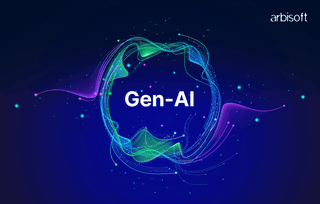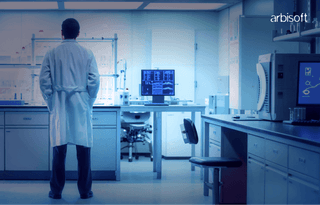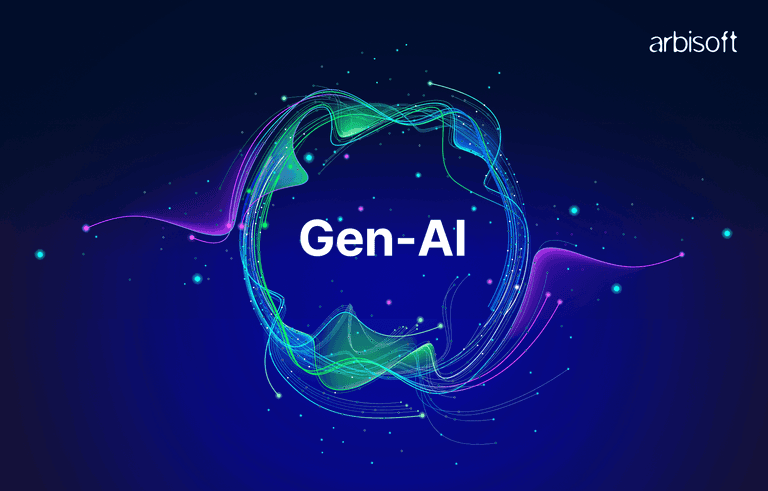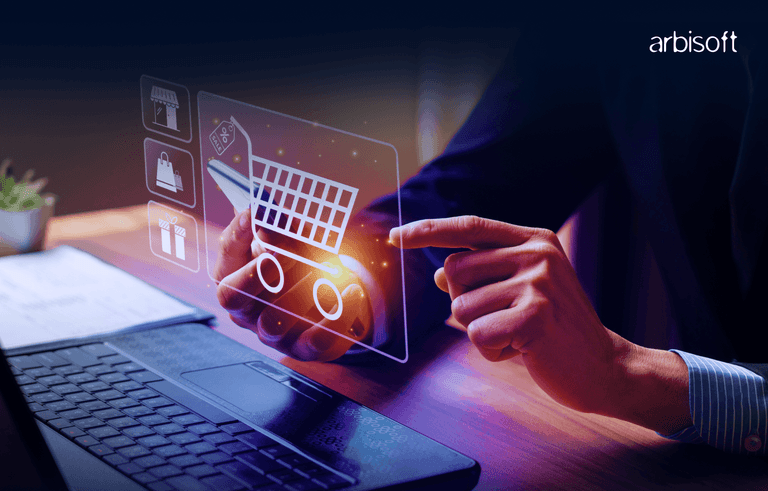We put excellence, value and quality above all - and it shows




A Technology Partnership That Goes Beyond Code

“Arbisoft has been my most trusted technology partner for now over 15 years. Arbisoft has very unique methods of recruiting and training, and the results demonstrate that. They have great teams, great positive attitudes and great communication.”
DSPy vs. Traditional Prompt Engineering

Working with generative models such as large language models can be tricky when you have to come up with just the right prompt to get good results. You might spend hours trying different prompts and still not get what you're looking for. This can be especially frustrating when trying to scale applications. However, leveraging cutting-edge AI solutions can make this process far more seamless, efficient, and reliable.
Having trouble getting that pesky LLM to give you the answer you’re looking for?

A good prompt can do wonders. Download the guide on how to write a good prompt (and avoid a bad one) to make your life just a bit easier!

The Prompting Problem
Prompt engineering involves writing specific phrases to communicate effectively with AI models. However, the process can feel like trial and error, leaving you feeling stuck. A small change in wording can lead to very different results. This inconsistency makes it challenging to build applications that depend on reliable AI outputs.
Importance of Effective Prompt Engineering for AI Applications
Effective prompt engineering is important for AI applications. Good prompts lead to better responses, making your applications more reliable. When prompts are clear and structured well, they help the AI understand what you need, resulting in consistent outputs. This is vital for any project where accuracy and reliability are key. Are there any frameworks or tools that can make this easier? DPSy, indeed. Let's learn more about it.
What Is DSPy?
DSPy, or Declarative Self-improving Language Program, is a new framework designed to help solve the challenges of traditional prompt engineering. Created by Stanford University, it’s open-source, meaning anyone can use and improve it. DSPy allows developers to focus on what they want to achieve instead of how to craft perfect prompts. It takes care of the details behind the scenes, making the whole process smoother.
Why DSPy Is Useful
Here’s why DSPy can be a game-changer:
1. Easier Programming
Instead of writing long, complicated prompts, you just define the task you want to complete. For example, you might need the model to answer a question or summarize a document. You write what success looks like, and DSPy takes care of figuring out the best way to get the right answer. This is much easier and faster than writing out each prompt manually.
2. Self-Improving
One of DSPy’s coolest features is that it keeps improving itself. As it uses feedback from its results, it learns and adjusts to perform better over time. You don't need to go back and tweak anything manually, it learns from experience.
3. Flexible Modules
DSPy is built in a way that you can reuse different parts of it, called "modules." You can pick and choose the modules that fit your project, making it flexible for many tasks like answering questions, summarizing text, or holding a conversation. Think of it like building blocks that can be customized to fit your needs.
How DSPy Works
Here’s a simple overview of how DSPy operates:
1. Task Definition
To start using DSPy, you first need to define your goals and the metrics to optimize. This means figuring out what you want the model to do and how you will measure its success. DSPy uses example inputs—either labeled or unlabeled—to help it learn the task better and improve performance. It also introduces modules as reusable building blocks for different NLP tasks.
2. Building a Pipeline
Once you've defined your task, you can choose and set up the right modules. DSPy allows you to connect these modules together, creating complex workflows that suit your needs. Each module has a signature that tells you what input it needs and what output it gives, ensuring they can work together smoothly.
3. Optimizing and Compiling
DSPy optimizes prompts using in-context learning and automatic few-shot example generation, which means it continuously improves them to help the model perform better. It can also use transfer learning to fine-tune smaller models for more specific tasks. Finally, DSPy compiles the entire setup into executable Python code, making it easy to integrate into your applications.
This simple approach lets you focus on designing your application while DSPy takes care of the tricky parts of prompt engineering and model optimization.

This diagram shows how DSPy works by changing raw data into a better AI model. It starts with a dataset that defines the signature, which is like a guide for input and output. This signature helps create a module, which DSPy then improves using special techniques. After that, the improved module is tested to make sure it meets the expected standards.
This simple process lets you focus on the big picture while DSPy manages the tricky parts of prompt engineering and model optimization.
Why to Use DSPy?
1. More Reliable Results
With DSPy, your results will be more consistent because you're focusing on the end goal, not the exact wording of the prompt. This helps prevent errors or unexpected answers.
2. Saves Time
You won’t have to spend hours writing and rewriting prompts. Once you define the task and give some examples, DSPy does the rest, ensuring reliable performance much like automation testing services streamline quality assurance.
3. Easy to Adjust
If you need to change something later on, DSPy makes that simple. For instance, if your chatbot needs to handle a new type of question, you just tweak the task definition and it will adjust accordingly.
4. Scales Well
As your project grows, DSPy adapts automatically. Whether you're working with more complex data or expanding the size of your project, DSPy can handle the increased workload without needing extra manual effort.
Common Uses for DSPy
DSPy is useful for many tasks where language models are applied. Here are some examples:
1. Answering Questions
If you’re building a system to answer questions, DSPy can break down complicated questions, figure out what’s being asked, and provide better answers using reasoning techniques.
2. Summarizing Text
Whether you need to summarize news articles, reports, or even entire books, DSPy can handle it. It’s smart enough to adapt its summarization style depending on the length or detail required.
3. Creating Code
For developers, DSPy can generate code snippets based on simple descriptions. This is useful when you want to quickly prototype an idea or need help generating boilerplate code.
4. Language Translation
DSPy can be used to translate text between languages while keeping the meaning and context intact. This makes translations more accurate and natural-sounding.
5. Building Chatbots
Creating a conversational AI is easier with DSPy because it helps the bot handle complex questions, remember past conversations, and respond in a natural way. This capability enables hyper-personalization by adjusting responses based on user preferences.
DSPy vs Traditional Prompt Engineering
Here’s a comparison table highlighting the differences between traditional prompt engineering and DSPy:
Feature | Traditional Prompt Engineering | DSPy |
| Approach | Crafting specific prompts through trial and error | Declarative programming with a focus on tasks |
| User Focus | Users focus on how to write prompts | Users define what they want the model to do |
| Optimization | Manual adjustments needed for prompt effectiveness | Automatic optimization of prompts over time |
| Flexibility | Rigid and often requires rewriting prompts for changes | Highly adaptable; easy to adjust tasks and metrics |
| Modularity | Typically lacks modularity; often custom-built for tasks | Modular architecture allows reuse of components |
| Scalability | Scaling can be complex and requires manual adjustments | Automatically scales with changing requirements |
| Learning | Limited feedback mechanism; learning requires user input | Self-improving prompts based on evaluation and feedback |
Wrapping Up
DSPy simplifies working with AI language models by focusing on programming the model's behavior rather than writing specific prompts. It learns and improves on its own, making it more reliable and easier to scale. Whether you’re building ai chatbot solution for ecommerce, summarizing text, or answering questions, DSPy can help you save time and get better results with less effort.
This tool is especially helpful for developers who want to build AI-driven apps but don’t want to spend hours fine-tuning prompts, a process further simplified when combined with robust software development services.
























